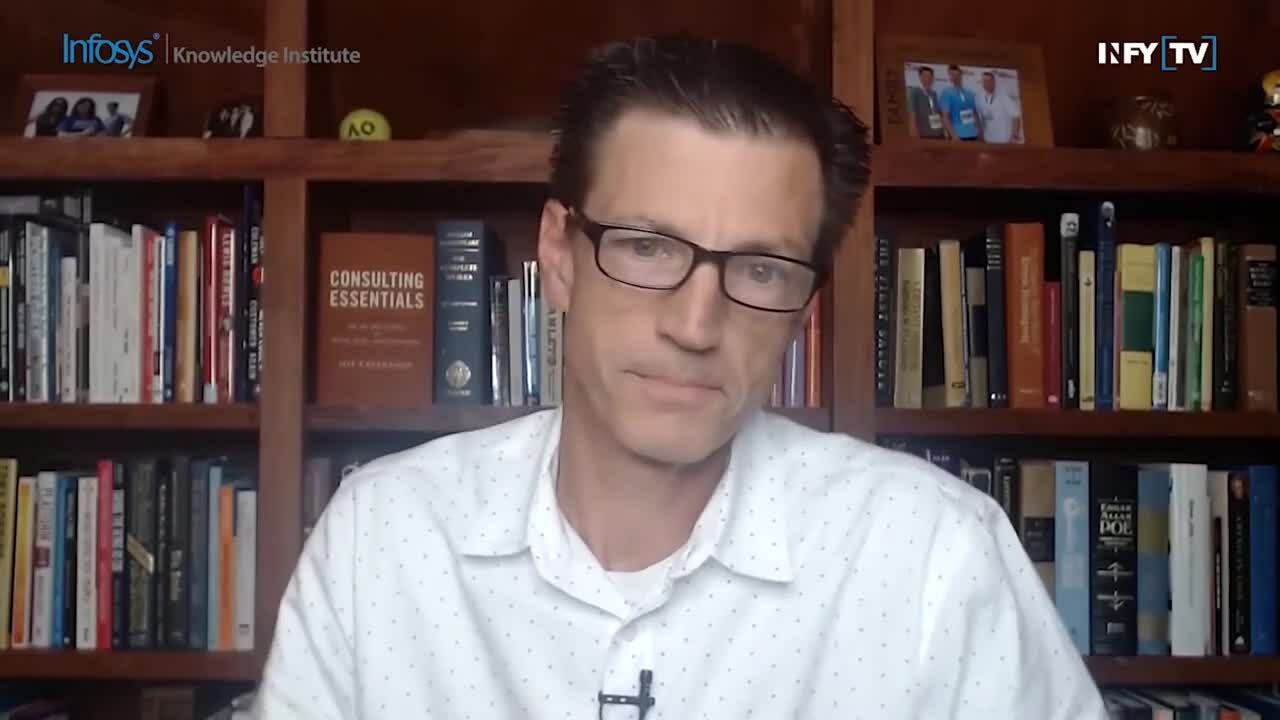
Humans at the center of a data-driven partnership
Jeff Kavanaugh, Vice President and Global Head, Infosys Knowledge Institute and Skyler Mattson, President, WONGDOODY discuss the changing ecosystem, and the transforming dynamic between CMOs and CIOs
CMOs are well placed to communicate the company's social purpose to their stakeholders, which because of the pandemic is more important than ever
While CIOs bring big data to the table, which talks about what is driving business, CMOs need to add thick data
Nearly half of the executives in the top-tier companies said they expect that a better collaboration between the CMO and CIO will drive an increase in revenues by at least five percent, or more
Ask any organization, and the answer you’ll get is that analyzing customers isn’t easy. Holding on to them, is an even bigger challenge.
Here's an example.
When a certain retailer wanted to entice its already loyal followers with an interesting spin on their app experience, the only way to find a solution was for the heart and the brain of the business to come together.
Who are they, you ask?
They're the CMO and the CIO of the organization.
In a conversation to discuss 2020's CMO-CIO Radar report, when Jeff Kavanaugh, Vice President and Global Head, Infosys Knowledge Institute asked for instances where the partnership was key, Skyler Mattson, President, WONGDOODY, was ready with several examples.
The said retailer being one of them.
"They wanted to create this app experience that really embodied the spirit of their brand," says Mattson, adding: "And really, they wanted to try to bring the in-store personal touch to a pretty transactional app experience."
To do this, says Mattson, the marketing and the tech team was brought together to identify the pain points, or the motivations of customers.
"And together, we outlined the 'appertunities'... which were really these micro moments when customers may engage with you," she notes.
Fundamentally, what comes into play here is the key factor of CMO-CIO collaboration, wherein marketing and technology need to work together in a double-helix model, much like that of a DNA.
Growing value of the human touch
Before the onset of the pandemic, Skyler notes that more than 51% of the IT respondents had thought that the CMO role would go away entirely. What has happened now, instead, is a resurgence of the role, especially during the pandemic when the human touch is imperative.
"We're seeing the CMO take over as the one responsible for brand resilience. They have to make sure communication stays authentic, but a customer's experience stays positive," notes Mattson, adding, "CMOs are also well placed to communicate the company's social purpose to their stakeholders, which because of the pandemic is more important than ever."
According to the research, marketing respondents also viewed the shift from agility and CX (customer experience) to HX (human experience) 23% more important than the CIOs.
A focus on HX, or human experience, indicates moving to a business strategy that has, at its center, the people using the product or service.
Mattson, however notes that the report indicates a significant disconnect between how important HX is in reference to other factors, and there is still a gap between marketing and tech alignment to the purpose.
“Our research showed that only a third of the respondents had strong cross functional alignment,” she says.
Relatedly, the research also talks about the changing ecosystem where the focus for organizations has now expanded to the social aspect beyond the environmental and governance aspects that together comprise ESG.
Mattson says the C-suite will have to focus on ESG goals, come together and collaborate across the board.
“These goals really encompass all aspects of business,” says Mattson.
Merging of the data sets
As organizations seek to connect with customers at a deeper level to drive business, the research found that not only will CMOs and CIOs have to partner on solve consumer problems, but they have to bring to the table their respective data skills to better understand, and cater to customers.
While CTOs bring big data to the table, which talks about what is driving business, CMOs need to add thick data.
“Big data tells us the motivations and drivers behind the big data. So big data is telling us what a customer bought. Big data tells us why they bought it,” says Mattson.
The retailer at the beginning of our article with is an example where the marketing and tech teams were brought together, and together they built an improved experience for the customers.
“Marketing shared creative ideas based on who the customer is their wants, their needs, all of this thick data, and the IT team built on these ideas with possible tech solution,” says Mattson.
This partnership is also crucial, says the report, to drive business. Nearly half of the executives in the top-tier companies said they expect that a better collaboration between the CMO and CIO will drive an increase in revenues by at least five percent, or more.
“That is going to take place when marketing and it are collaborating on the customer focused initiatives,” notes Mattson, adding; “So, things like content, personalization, digital transformation, human experience, are the types of initiatives that boost customer engagement and loyalty and then ultimately, business.”
In fact, the environment induced by the ongoing pandemic has only elevated the need for this deeper partnership between CMOs and CIOs in businesses.
As a recommendation to organizations, Mattson notes that Covid-19 is wiping out some of the dividing lines between tech and marketing.
“Organizations are seeing firsthand, that to survive, they need to work together. So, collaboration is going to be the biggest recommendation moving forward,” she says.


